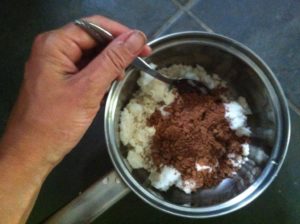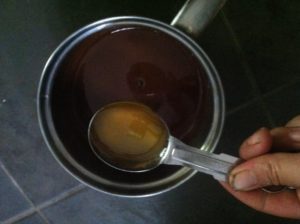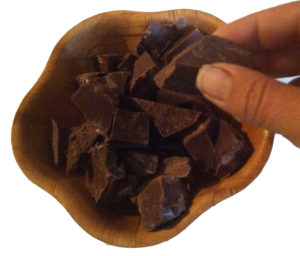Eating Hearty and Healthy in Pregnancy
You can eat as much golden butter as you want to. Go ahead and slice open a ripe avocado and grab a spoon. Enjoy those bright-orange, gooey, rich egg yolks, and the bacon by their side. Dietary fat during pregnancy is not only delicious and satisfying, it’s incredibly important for the health of both mothers and babies.
High-quality fats provide steady energy to our bodies and cells, and are the preferred energy source for our hearts. They are the building blocks of cell membranes, nerves, and make up more than half our our brains. Babies brains and nerves cannot develop properly without essential fatty acids coming from their mothers (especially DHA and EPA).
Dietary fat helps transport and assimilate all four fat-soluble vitamins A, D, E and K. And more and more research is showing that certain kinds of fat may have protective and healing qualities for many of our organs and tissues. Growing babies (and their mothers) need fat and fat soluble vitamins for the proper development and growth of every single tissue in their tiny, miraculous, complex bodies.
Dispelling the myth of “Fat Makes You Fat”
So many of us have been sold the story that “fat makes you fat,” and that fat (especially from animal sources) leads to cardiovascular problems and atherosclerosis (hardening of the arteries). These conclusions were based on poorly conducted, scanty research, and an oversimplified understanding of human metabolism. This “old-school” perspective about fat is currently being revisited by the scientific community.
The most recent version of the US Department of Health and Human Services and the US Department of Agriculture’s “Dietary Guidelines for Americans,” has removed limits on dietary cholesterol intake because of a lack of evidence linking dietary cholesterol with blood cholesterol or atherosclerosis. The National Academy of Sciences Institute of Medicine has set the acceptable macronutrient distribution range (AMDR) for dietary fat at 20-35% of total caloric intake, and has established that there is no upper tolerable limit for dietary fat, meaning no amount of fat is toxic.
Eating adequate fat is important for all people, but it’s especially important for pregnant and lactating women, and for growing children. Fat soluble vitamins A, D, E and K can only be digested and assimilated in the presence of dietary fat. Even if these vitamins are taken as supplements, without appropriate levels of fat in the diet, they cannot be properly absorbed. If a pregnant woman doesn’t have adequate intake of these vitamins during pregnancy, her body will draw on her own stores in order to give as much as possible to her baby. If stores are good to begin with, this can mean baby gets plenty and mom gets a little low; if stores are low to begin with, both mom and baby don’t get adequate amounts of these important nutrients.
A green-light for eating lots of delicious, satisfying, high-fat foods does not mean it’s a good idea to go out and eat a bunch of junk food, however. Not all fats are created equally. Where they come from and how they are processed, stored, and prepared makes a huge impact on their nutritional qualities. Also, many fat-rich prepared and processed foods contain large quantities of sugar, refined flours, and in some cases flavorings and preservatives; these are not healthful substances.
Our bodies have evolved to utilize fats from both plant and animal sources, and we all need both saturated and unsaturated fats to build tissues, provide energy, and perform body functions. The main guiding principles when choosing high-fat foods are these:
- All foods are healthier and better utilized by our bodies in their whole, natural, unadulterated forms.
- Fats concentrate toxins. Both plant and animal fats produced with chemicals (conventional, GMO, non-organic) can have extremely high levels of dangerous compounds, which are further concentrated during pregnancy in the growing baby, and in breast milk.
- Animals who are raised in healthy conditions, eating their natural diets, produce healthy fats, while those who are raised in confinement and fed inappropriate diets produce unhealthy fats (this is true for animals we eat, as well as dairy and egg-producers).
- High heat can turn any healthy fat into an unhealthy fat. Different fats can withstand different temperatures unscathed. Fats should never smoke when cooking, and most plant-derived fats should not be heated. The exceptions to this are coconut and palm oils for higher heat, and sesame, peanut, and sunflower oils for medium heat (but still not smoking!).
- Trans fats and hydrogenated oils are not appropriate food for anyone, anytime, and have been directly linked with fetal and maternal problems during pregnancy. Lots of packaged and prepared foods (chips, crackers, cookies, etc.) contain these dangerous substances. Unless a restaurant states otherwise, most frying oils are hydrogenated. Ask before you order french fries! Make them at home using tallow, lard, or coconut oil if you can’t find safe fried food options and you’re craving the crunch.
Recipe: Coconut Butter Fudge
Coconut butter is just what is sounds like: coconut meat that has been ground up into a butter just like peanuts are ground into peanut butter. It is thicker, more dense, and nuttier than straight coconut oil, and contains a little bit of fiber and protein, along with the easily-digestible medium chain triglycerides (fat) that coconut oil is full of. This kind of fat is special because it is already in a form that our body recognizes as energy (it doesn’t need to be further broken down). During pregnancy and the postpartum time when energy levels and blood sugar can fluctuate like crazy, medium chain triglycerides (especially in snacks) can help bring the roller coaster down to a pony ride.
You can find coconut butter online or at most natural food stores. Chocolate is high in many minerals, particularly magnesium, which many pregnant women are deficient in. This fudge is a high-energy, delicious, healthier alternative to store-bought chocolate, and doesn’t contain any of the preservatives, flavorings, or refined sweeteners that most chocolate bars do.
Yield: just over 1 cup
1 cup coconut butter (not coconut oil)
3-8 tablespoons cocoa powder (depending on how chocolatey you want it)
0-1 tablespoons raw honey (the honey can be omitted completely for those dealing with blood sugar issues like gestational diabetes. Coconut is so naturally sweet that it’s pretty tasty without any sweetener.)
0-2 pinches sea salt (to taste)
Optional: grated or powdered ginger, cayenne, cardamom, cinnamon, cloves; chopped nuts and/or dried fruit
- Mix together coconut butter, cocoa powder, salt, and any spices or special additions that you’re choosing in a small saucepan.
- Place saucepan over very low heat and stir constantly until coconut butter has melted completely and all ingredients are thoroughly combined. Be careful not to burn it!

- Remove pot from heat.
- Add honey if desired *It is important to add the honey after the pot has been removed from the stove, as it contains beneficial enzymes that are destroyed at high temperatures*

- Line a small bowl or dish with parchment paper.
- Pour the melty, chocolatey goodness into your parchment-lined container and refrigerate or freeze to harden.

- Remove from dish (easily with the parchment paper!), and cut into whatever sized chunks suit your appetite.

Store in the refrigerator and enjoy!


